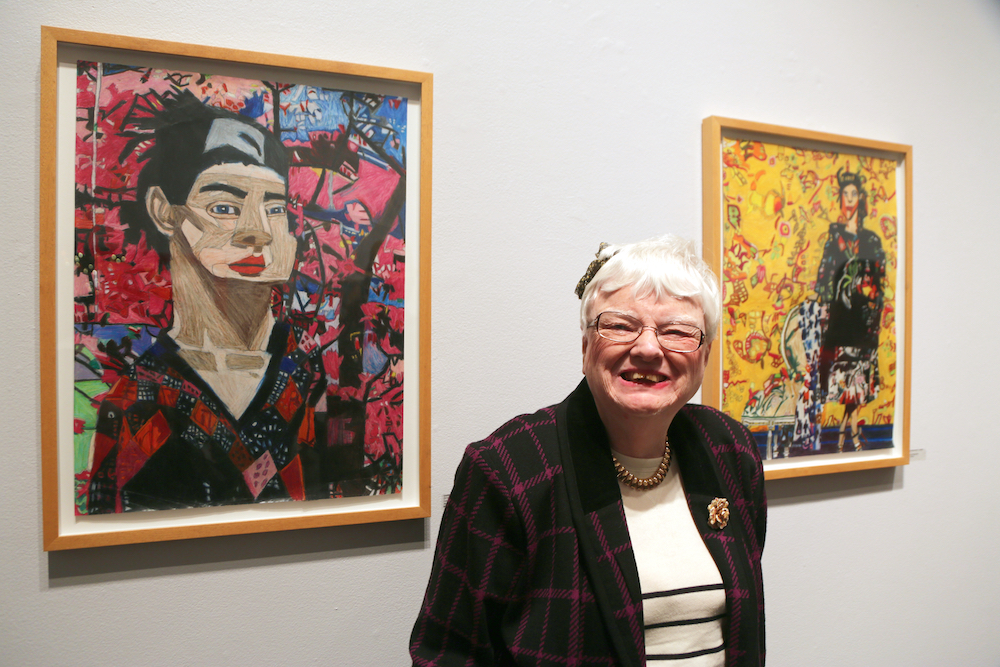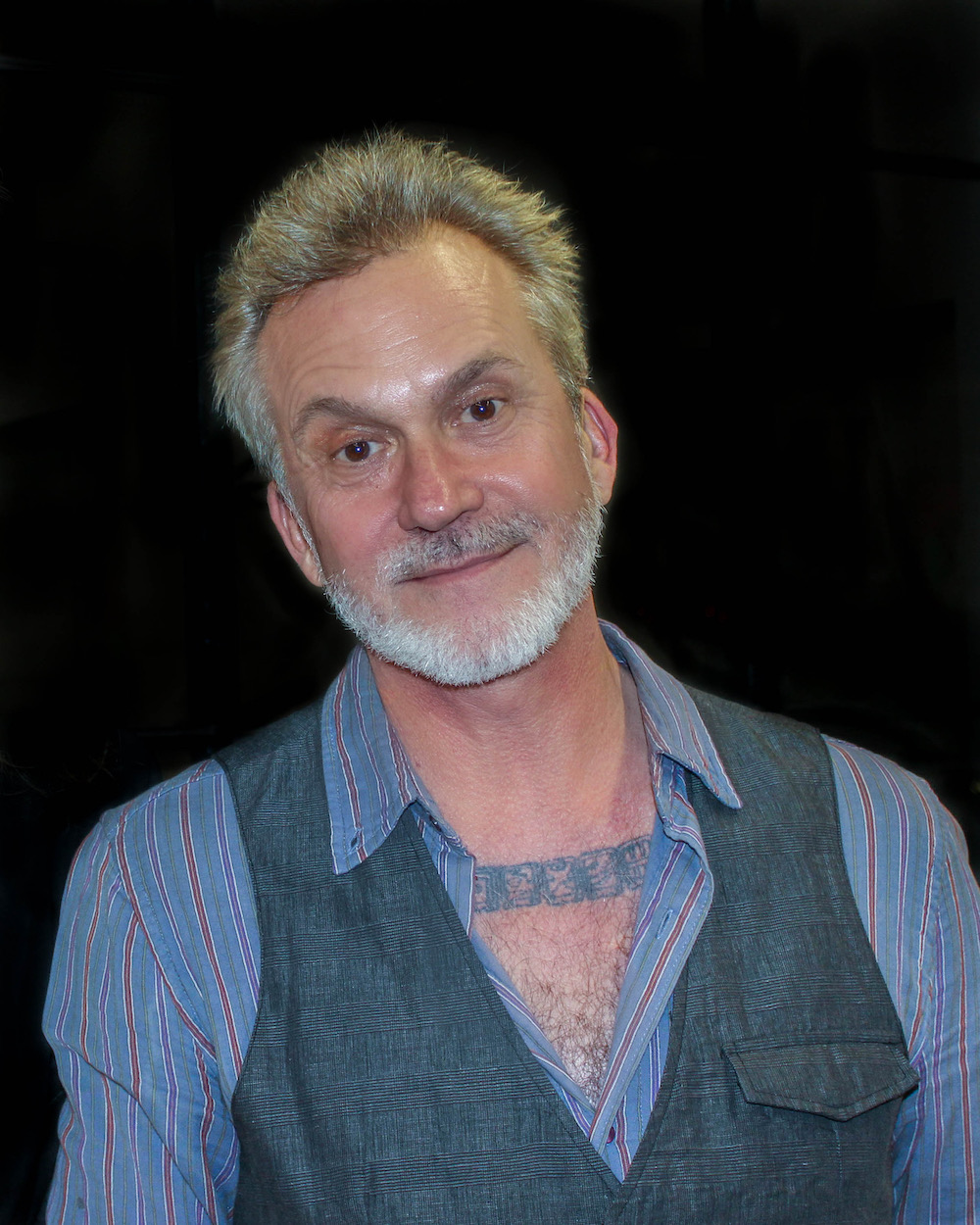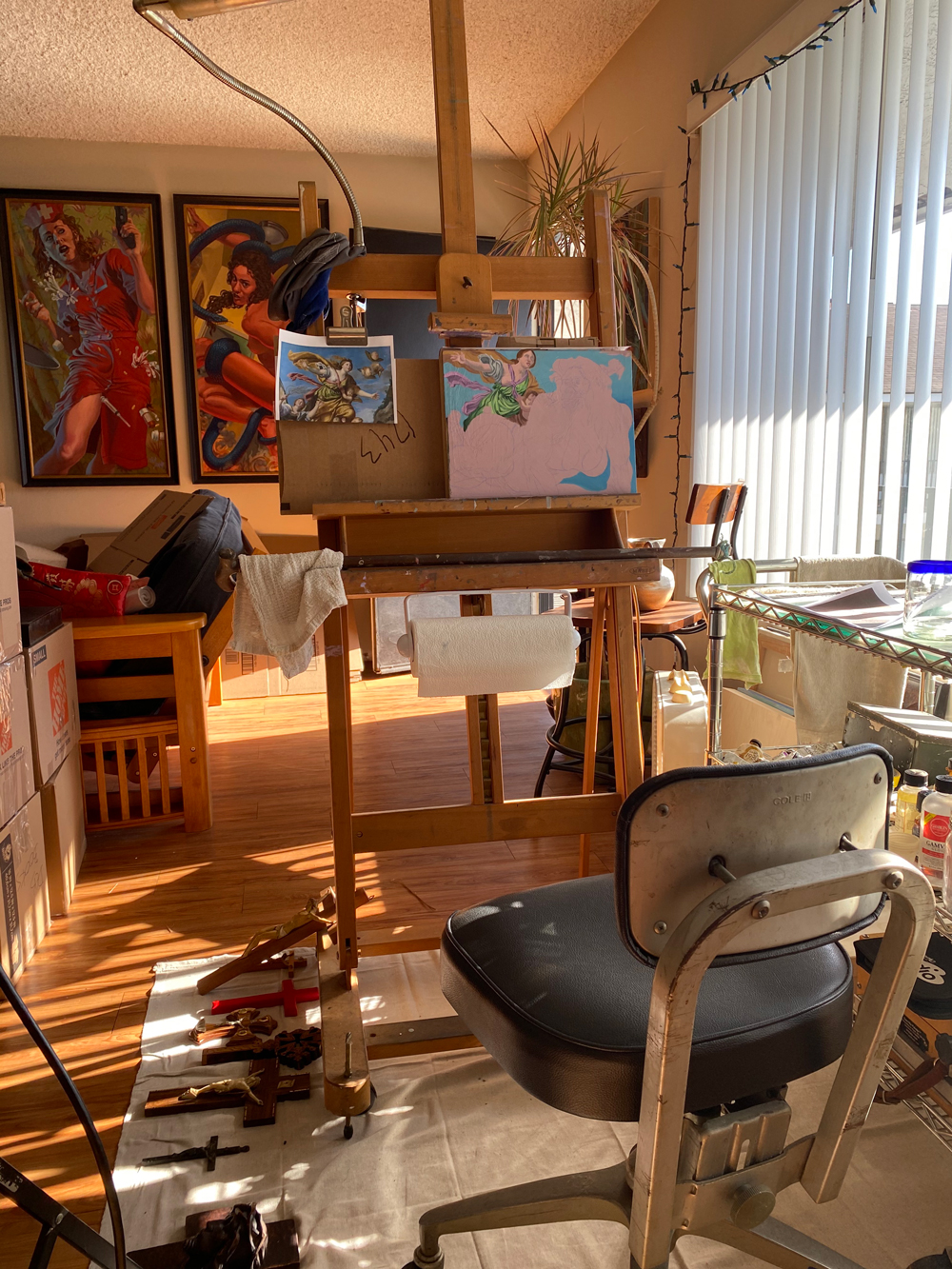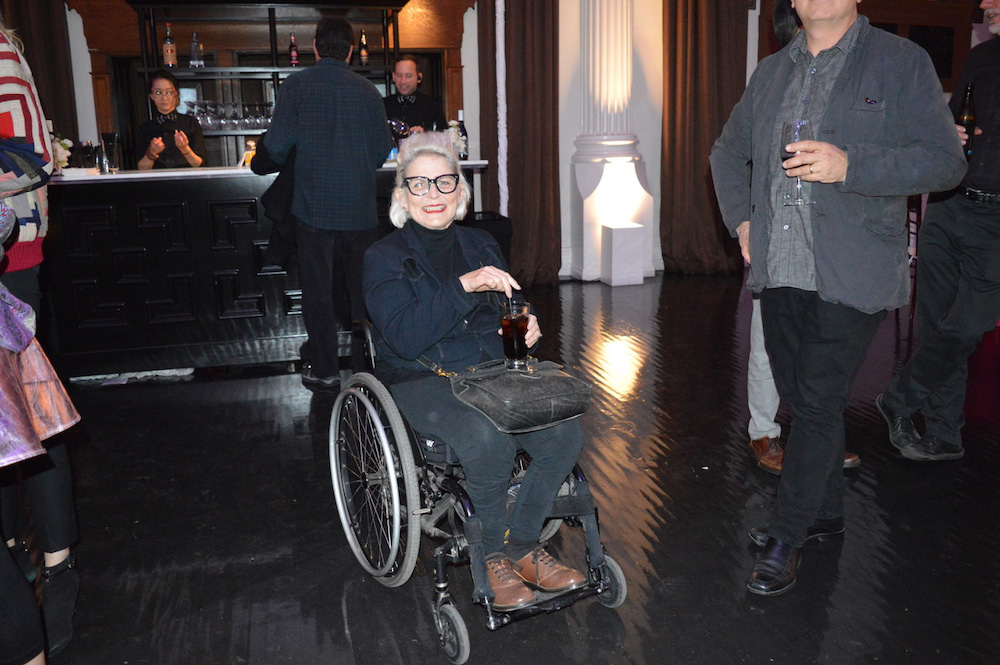An Appreciation: Liz Young (1958–2020)
LA artist Liz Young passed away in December. I’ve been going to Los Angeles art openings as far back as the late ’80s—and Liz Young was always there. Then one day I was at the Y where I swim downtown, and there she was again. I would go to the lap pool and see the assistants lower her down into the water—always with a big smile beaming from her face as she made eye contact with me. Her art was dark and compelling, but uplifting, which is some feat unto itself. We, in the LA art community, will miss Liz’ spirit and tenacity, and perhaps we can learn a few things from such a brave soul. Here are some shared memories of Liz from LA artists, curators and friends. —Tulsa Kinney, Editor
Liz’ last project at LACE was a performance called I Know What Danger Is. It’s What You Run Away From, as part of “Irrational Exhibits 9” in 2016, curated by Deborah Oliver. She was an enduring influence on her students at the LA County HS for the Arts and helped organize a year-end group show of her students’ work for several years at LACE. On a very personal note, my daughter was a student of hers and says, “I would not be the designer or artist I am today without her teachings, and I only wish I could have told her so.” —Sarah Russin
When I first met Liz, she was a grad student at Otis in the early ‘80s and we remained close friends until her life ended so unexpectedly. Her work was extraordinary. She could make dark subject matter so accessible and inspiring. Liz was a formidable artist and also a teacher. She became a seamstress, embroiderer, taxidermist, whatever it took to bring her ideas to fruition. Nothing stopped Liz. If you spent anytime with her you realized that what she made seem so easy—having to use a wheelchair to get around—wasn’t easy at all. She truly overcame obstacles daily with finesse and a matter-of-factness, never afraid to ask directly for help to literally get over
something. —Joy Silverman
A few times over the years when I would reach my breaking point with the hectoring negativity of certain people I would ask point blank “How can Liz Young be so bubbly, upbeat and engaging stuck in a wheelchair and you can walk around freely but are such a fucking downer?” I confessed to Liz that I did this and she asked, “Have you ever got a good answer?” and she meant it, she wanted to hear a good comeback to my question, and that is how I will remember her—totally engaged. —Mat Gleason
Liz Young had an almost preternatural understanding of mortality and the earth itself, the claim of place upon identity and the existential contest of these elements; and her work reflected their full compass. Yet she engaged that vision—and the rest of the world—straight on, and her community with unstinting generosity, courage, spirit and verve. —Ezrha Jean Black
We met in a whirling spree of light, noise and euphoria, one night almost 40 years aback. We were both dancing to the same music, in the same blurry state. I almost landed on her lap. She smiled a smile that froze me midair. Just enough time for her to move to one side. Swept off my feet, I fell… deeply and never really recovered. —Brett Goldstone
Liz had an artful life. Making work by “making it work.” Needle and thread, paper and pen, knife and suture. She was clever with words and deeds. She loved life. She was curious and lively, amusing, industrious and resilient. Liz was a force of nature. I will miss her forever. —Debbie Spinelli
Four Questions For Liz: Where are you my lovely friend? Who am I going to eat noodles with? I can hear the scratchy echo of your ball point pen in the background when we talk on the phone: Red or black? Missing you, I ask myself a lot these days, “What Would Lizzy Do?” —Raghubir Kintisch
Liz’ last installation [at Track 16] was trenchant: a figure floating head-first above a small sea of sewn leather balls. Or maybe the figure is falling. The balls are scattered, possibly left behind. We were just about to de-install the piece when we received the news of her passing. Goodbye, Liz. We miss you so much already. —Sean Meredith
Loving, Fierce,Inspirational, Indomitable, Bottomless, Forgiving, Unforgiving, Intuitive, Critical, Industrious, Kind, Aware, Blank, Sly, Collaborative, Singular, Beautiful, Strange, Caring, Nostalgic, Rooted, Prissy, Open, Free, Trapped, Ethereal, Romantic, Country, Longing, Gentle, Rugged, Knowing, Hurt, Transcendent, Unrelenting, Strength, Artist, Maker, Self, Identity. What I Love About Liz. — Barry Markowitz
Liz Young was a “bad ass” from the making to the installing of her work. Her joy of artmaking was everpresent and her generosity of spirit was palpable. She made large-scale installation durational performative works that were always incredibly articulate and visually powerful. Her work was inspired, touching and always unexpected. I’m so grateful our paths connected. Rest in Power. —Deborah Oliver
Liz. Artist. Beautiful. Forever young. Genius. Graceful. Generous. Strong. Kind. From darkness to light. Lighter still. Brilliant. The Sun. To stare at the Sun. Eyes wide open. You are the Sun. I will always remember you. —Donald Dunham
For Liz: https://www.youtube.com/watch?v=-EIWSeqyneA —Carol Cetrone

Helen Rae at The Good Luck Gallery, 2015
Helen Rae (1938–2021)
Self-taught artist Helen Rae passed away on February 18, 2021 at the age of 83. Helen was a trailblazer who broke down the walls of common art theory regarding MFAs, age and disabilities. She started making art at the Tierra del Sol studio arts program the first day they opened in 1990. She worked diligently at her practice in the studio five days a week, finding inspiration from fashion magazines while pushing boundaries of portraiture using ordinary tools such as graphite, colored pencils and paper. LA Times critic David Pagel wrote in his 2016 review: “Rae flattens volumes, collapses space and fractures planes in ways that make Picasso’s Cubism seem amateurish.” Helen inspired everyone who saw her drawings, paving the way for others to follow in her footsteps. Her work is widely collected around the globe, crossing the divide from “outsider” to contemporary artist with works promised to major museums. Rest in peace Helen, and thank you for sharing your voice and spirit with the world. —Paige Wery, Tierra del Sol Gallery Director

Portrait of Van Arno
Van Arno (1963–2021)
Art movements are an aggregation of disenfranchised souls that share a theory or practice; by necessity, the identifying ideology is exclusive. But the timing and location of the movement’s genesis can create a vortex that sweeps in non-aligned artists. This was the case with the Los Angeles painter Van Arno, who died January 18th of this year at the age of 57.
The Low Brow Art movement coalesced in the mid-80s and Van Arno’s paintings had all the technical qualities necessary for his inclusion. Consequently, art critics, dealers and collectors firmly placed him in the Low Brow camp, even though the subject of his narrative paintings had little to do with its cultural influences. In place of American Pop icons like The Munsters, Van studied up Pre-Colombian Central American Art, and instead of Bettie Page, Van chose to paint Popeye’s love, Olive Oyl. His four years at the Otis Art Institute, LACC, and the UCLA Extension Program also separated Van from the self-taught artists with whom he found himself surrounded, so when Van exhibited at the 01 Gallery and the museums that accepted Low Brow, his figurative paintings always stood out.
Art, for Van, was a vehicle to greater exploration; as he famously said, “I want to paint everything on Earth at least once.” As a result, his paintings are crammed with detailed characters ancillary to the main story. Still, the sum of all these objects added to Van’s prodigious talents at figurative painting put him in the forefront of a new American Regionalism, a place where he excelled at accurately depicting human muscles, not muscle cars. As Van’s talents matured over the years, he became a formidable draftsman; after all, if he wanted to paint everything, he had to draw it first.
Van exhibited his paintings throughout his life and had a show scheduled in 2021 at Keep Contemporary in Santa Fe. Van’s interest in ancient mythology segued to the overriding theme of his late work: powerful women in action. To this end he hired a variety of female models to pose in his studio, and it was common to see Van at art openings with the most striking woman in the room.

Van Arno’s last painting
Van was a skilled teacher and found academia to also be an appropriate arena in which to apply his skills. He was a Figurative Drawing Instructor at the Gnomon School of Visual Effects, Games, and Animation, designed characters for a weekly Flash Cartoon at Hits Magazine, and taught Life Drawing classes at Blue Rooster Art in Hollywood. No stranger to the intricacies of hiring nude models, he soon became known for his genteel approach; as one model revealed, “Every artist I worked for eventually said or did something weird, but not Van.” And even in the clothed world, Van maintained his respect. Perhaps Ron English, the noted Popaganda artist, put it best when he wrote, “Van was a person that was a delight in every possible way, from his art to his ease of being.” —Anthony Ausgang


